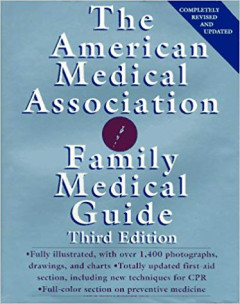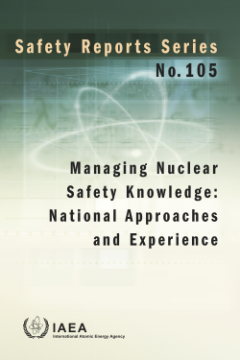Ditapis dengan

Benchmarks of Fuel Burnup and Material Activation Computational Tools Against…
Research reactors are powerful tools that contribute to scientific and technological progress worldwide. They are used for research and development in a wide variety of fields, in capacity building in nuclear science and technology, to produce radioisotopes crucial for medical and industrial applications, to support the development of national nuclear infrastructure, and in many other research …
- Edisi
- -
- ISBN/ISSN
- 978-92-0-101222-7
- Deskripsi Fisik
- 276 p
- Judul Seri
- IAEA TECDOC series
- No. Panggil
- 621.483 IAE b

Structural Steels-Plates, Wide Falts, Bars, Sections and Profiles
Applies to steel plates with thicknesses of 3 mm and over, wide strips in coils with widths greater than or equal to 600 mm, and greater than 6 mm in thickness, wide flats, bars and hot-rolled sections generally used in the as-delivered condition and normally intended for bolted, riveted structures.
- Edisi
- -
- ISBN/ISSN
- -
- Deskripsi Fisik
- -
- Judul Seri
- ISO 630 : 1995 (E)
- No. Panggil
- 671.80218 ISO S

Regulations for the Safe Transport of Radioactive Materials, 1996 Edition, Re…
This publication, Safety Standards Series No. TS-R-1, is an updated version of Safety Standards Series No. ST-1, which was a revised version of Safety Series No. 6 superseding all previous edition. It also includes the revision of Safety Series No. 80, Schedules of Requirements for the Transport of Specified Types of Radioactive Material Consignments (As Amended in 1990). These Regulations, fir…
- Edisi
- -
- ISBN/ISSN
- -
- Deskripsi Fisik
- - p. : illus. ; 21 cm
- Judul Seri
- Safety Standards Series No. ST-1
- No. Panggil
- 615.8406 IAE R

Nuclear and Radiological Safety, Nuclear Power, Nuclear Fuel Cycle and Waste …
This catalogue lists all sales publications of the International Atomic Energy Agency dealing with Nuclear and Radiological Safety, Nuclear Power and Nuclear Fuel Cycle and Waste Management and issued during the period of 1995-1996. Most publications are in English. Proceedings of conferences, symposia and panels of experts may contain some papers in languages other than English (Arabic, Chines…
- Edisi
- -
- ISBN/ISSN
- -
- Deskripsi Fisik
- -
- Judul Seri
- -
- No. Panggil
- 333.7924 IAE N

Integrated Assessment of Climate, Land, Energy and Water
This publication presents the findings of an IAEA Coordinated Research Project (CRP) on the development and application of the integrated climate, land, energy and water (CLEW) framework. Together with other UN partners, the IAEA has developed this framework in response to global challenges such as ensuring universal access to food, energy and water, to achieve UN Sustainable Development Goals.…
- Edisi
- -
- ISBN/ISSN
- 978-92-0-113720-3
- Deskripsi Fisik
- 76 Pages
- Judul Seri
- -
- No. Panggil
- 303.4 IAE I

The American Medical Association: Family Medical Guide, Third Edition
When it was first published in 1982, The American Medical Association Family Medical Guide set a new standard for depth, authority, and accessibility. The completely updated and expanded third edition of this landmark guide brings this bestselling medical home reference into the nineties. It is simply the most useful, comprehensive home health reference ever published, brought to you by the nat…
- Edisi
- -
- ISBN/ISSN
- 0679412905
- Deskripsi Fisik
- 880 p. : illus. ; 24 cm
- Judul Seri
- -
- No. Panggil
- 616 CLA a

Manajemen Kearsipan Modern: Dari Konvensional ke Basis Komputer
Membahas tentang sistem kearsipan dari konvensional sampai pada basis komputer. Pembahasan dilakukan secara luas dan sederhana, sehingga diharapkan dapat mempermudah pemahaman pembaca, terutama mahasiswa di bidang sekretaris, manajemen atau administrasi perkantoran untuk membantu meningkatkan pemahaman mereka tentang manajemen kearsipan yang baik. (Jml)
- Edisi
- -
- ISBN/ISSN
- 9793469722
- Deskripsi Fisik
- ix, 222 p. : Illus. ; 20 cm
- Judul Seri
- -
- No. Panggil
- 651.56 SUG m

Managing Nuclear Safety Knowledge: National Approaches and Experience - Safet…
This publication provides practical guidance and information to Member States on how to manage nuclear safety knowledge at the national level, beyond the boundaries of individual organizations. It describes the underlying concepts, challenges and available approaches and tools, as well as summarizing the experience gained by Member States to date. The publication is in line with the ultimate ob…
- Edisi
- -
- ISBN/ISSN
- 978-92-0-104221-7
- Deskripsi Fisik
- 45 pages
- Judul Seri
- -
- No. Panggil
- 621.48 IAE M

IAEA - Safety Standards Series No. GSG-1 : CLASSIFICATION OF RADIOACTIVE WAST…
This publication is a revision of an earlier Safety Guide of the same title issued in 1994. It recommends revised waste management strategies that reflect changes in practices and approaches since then. It sets out a classification system for the management of waste prior to disposal and for disposal, driven by long term safety considerations. It includes a number of schemes for classifying rad…
- Edisi
- -
- ISBN/ISSN
- 978–92–0–109209–0 / 1020–525X
- Deskripsi Fisik
- 68 p
- Judul Seri
- -
- No. Panggil
- 363.7289 IAE S

Milestones in the Development of a National Infrastructure for Nuclear Power …
The development and implementation of an appropriate infrastructure to support the successful introduction of nuclear power and its safe, secure, peaceful and sustainable application is an issue of central concern, especially for countries that are considering and planning their first nuclear power plant. In preparing the necessary nuclear infrastructure, there are several activities that need …
- Edisi
- -
- ISBN/ISSN
- 978-92-0-104715-1
- Deskripsi Fisik
- 70 Pages
- Judul Seri
- -
- No. Panggil
- 384.551 IAE M
 Karya Umum
Karya Umum  Filsafat
Filsafat  Agama
Agama  Ilmu-ilmu Sosial
Ilmu-ilmu Sosial  Bahasa
Bahasa  Ilmu-ilmu Murni
Ilmu-ilmu Murni  Ilmu-ilmu Terapan
Ilmu-ilmu Terapan  Kesenian, Hiburan, dan Olahraga
Kesenian, Hiburan, dan Olahraga  Kesusastraan
Kesusastraan  Geografi dan Sejarah
Geografi dan Sejarah